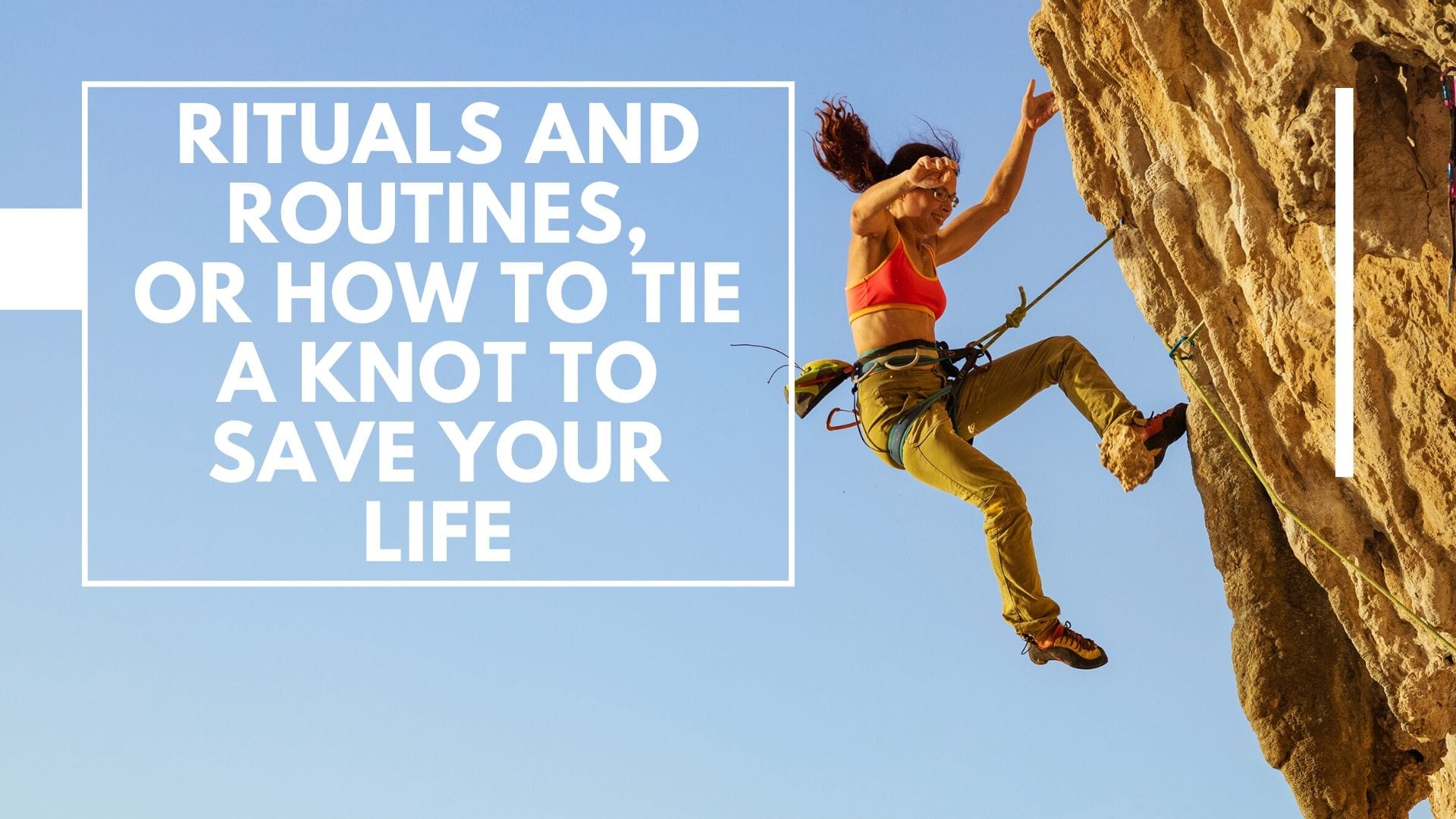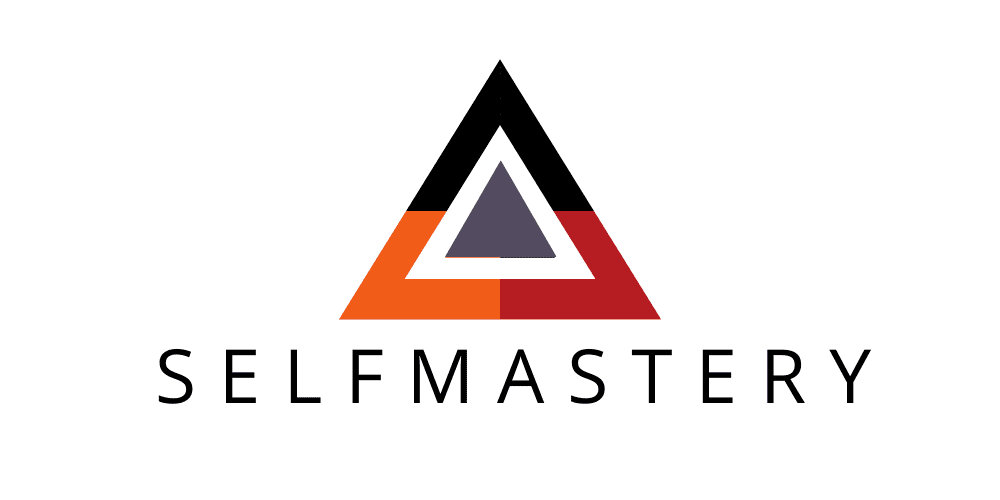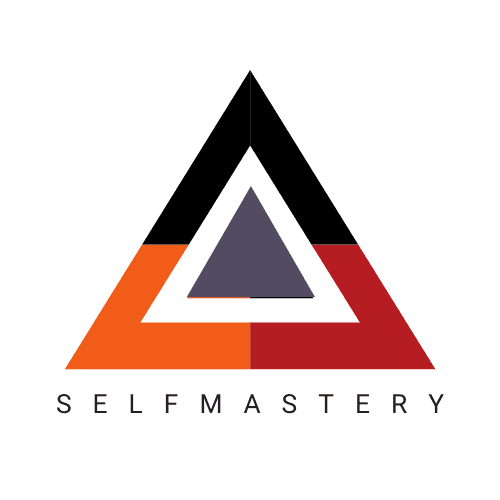
26 Feb 3 ways to add rituals and routines to your training
Recently I took a class on lead rope climbing. Being a movement geek and an overall nerd it suffices to say I was in my element. When the beginner –like me– goes from top-rope climbing to lead climbing, the most evident hurdle is falling. The rope is holding you from below so when you fall … you fucking fall. After an hour or so of drills and climbing, the time for learning how to fall had arrived. I am a good student, and in a coaching environment, I am compliant as fuck. Dylan, the coach, then asks me to go on the wall and perform some practice falls. I was the first to go. I WAS SO READY. My outfit was lit, my mustache was waxed and pointy, and I had been working on my movement for the past months so I felt like I had all the moves. In plain Colombian English “estaba listo pa’ show the fuck off.” At that point my plan was simple: move slowly and with finesse, focus on my feet, and then fall like a champion. Before starting, Dylan checks my knot, smiles at me and says: re-do that knot please, it is pretty bad.
What an awesome reminder that was. It grounded me right away. Waxing one’s stache is fundamental. The pivoting of your body on the holds is crucial. Having graceful feet placement is the sign of intentional movement. But the first thing I learned when I started climbing was the initial ritual of safety. Tie your knot well and make sure you are correctly attached to the rope. Then check your belayer’s knot as she checks yours. This is the initial ritual before every climb . Your life depends on it.
I am the kind of person who prides himself on mastering the basics and I also have a strong aesthetic sense, so a good looking knot should be kind of my thing. Well, it wasn’t. While I re-tied my knot I felt my soul aching a little. A slow and pointy burn. I was like Juanito, mano, qué pasó campeón? Now, I coach people all the day long on how to accept mistakes as catalysts of growth. Reflect, make yourself better, and let them go. I re-tied my knot, got my brain right, and promised myself that my knots are going to be so effing cute from now on.
Rituals and routines are the very essence of training. The climbing example is the most tangible one. It is the most explicit one. Here your life depends on them. However, it goes farther and deeper than that. Training is about making movements and behaviors automatic through repetition. You want to rewire your defaults. You are giving your body and brain pathways to follow when the situation demands it. Sports psychologists and coaches have known this for a while. Very often the core of their work is just the implementation of effective routines and rituals. The logic behind this is super simple. Athletes can only control their own behaviors. Focusing on anything else is a wasted effort. “Sports routines can increase control over [athletes’] performances by enabling them to directly prepare every area that impacts their sport. Those areas athletes can control include their equipment (is your gear in optimal condition?), their body (are you physically and technically warmed up?), and their mind (are you at prime focus and intensity?)” (Taylor)
Benefits of rituals and routines in training
In addition to this basic principle, Sean McCann, senior sports psychologist for the United States Olympic Committee (USOC) lists the following as the main benefits coming out of the practice rituals and routines:
▶ A sense of familiarity in a new environment. Routines are portable, transferable, and adaptable. Listening to the same track during your warm-up and going through the same warm-up flow every time you train, will make you feel right home in the warm-up area for that Turkey Run your partner signed you up for.
▶ Enhancing feelings of control and confidence. “You have done this a thousand times” is such a powerful thought. It is like saying to yourself “you know exactly what to do here, you got this.” Any exercise ritual can do this for you–whether you perform it before or during training/competition. Routinely repeat to yourself a set of cues that make your movement better every time you perform your movement. When the time to perform comes, your ritual will take over. (Hint: when I am running I love the mantra: stay in pose.)
▶ Making useful behavior automatic. You don’t think about brushing your teeth. You just do it. You don’t question if you feel like it or not. It is an automatic behavior before bed. It is your pre-bed ritual, and it works.
▶ Routines increase the opportunity for the brain to focus on the proper things. When the coach at your gym announces the workout, Francine always goes to eleven. She cannot stop dreading the whole thing. Yet, you are chill as a chicken, because you only have the brainpower to focus on your breathing warm-up routine. You hear Francine talking but you don’t listen. You are so so deep in your breathing that to get you out of there it would require Queen Bey herself calling you for some back-up dancing.
As you can see from the above, the most common practices for rituals and routines for athletes reside inside their training. Warm-ups, pre-competition routines, exercise rituals are the most common applications. They are accessible and straightforward, and you can make them work for you. You don’t need something very sophisticated; a simple set of movements, a mantra you repeat in your head, or a song you listen to on the way to the gym will do it. If you work with me, chances are you have this kind of ritual and have never even thought about it.
3 Ways to add rituals and routines to your training
However, you should not stay there. The power of routines and rituals can be easily applied to that other aspect of training we don’t work as carefully as we probably should: recovery. Here are three areas in which you can use this concept:
▶ Post-workout routines. As a trainer and as an athlete I used to neglect the cool-down. I did not find enough articles in PubMed to satisfy my scientific urge. However, experience has shown me otherwise. Lack of research does not imply ineffectiveness. Bringing your heart rate down in a controlled manner, making sure you have regained your normal range of motion by stretching, and focusing on the wins of a given training session are all super effective. They can be easily accomplished in a 5-10 minute window. This simple practice will improve the quality and impact of your training. Chill down mdfkr!
▶ Pre-bed rituals. Yes, you know it, flossing is the bomb. Hygiene is fundamental not just for your teeth though. For your muscles and mind too. Every night before bed try doing some soft tissue work on your muscles, working on your flexibility, or giving your partner a massage in order to get one back. As for mental hygiene the power of a solid brain dump routine is unmatched. Clean up your act!
▶ Eating habits. The difficulty of nutrition is overstated. Ritualize how you eat and you will prevail. Before eating make a reality check, are you hungry for realz? Or are you just eating because you feel bored/anxious/lonely/happy, etc.? This is your pre-meal routine. Start with veggies and protein, always. This is your warm-up routine. After eating slowly and enjoying your food, check out how you are feeling. Are you satisfied and not full? Then you are done. This is your post-meal routine (in case you are wondering, the dessert is not a cool-down.) Eat like you train!
I am sure you can expand this practice to a lot more instances in your life. In the end, that is what we want from training, we want it to be our small and controlled laboratory for life. Now let me go, I have to go and ritualize my knot tying, so that next time you see me climbing you are awed by the beauty of my rope skillz.


